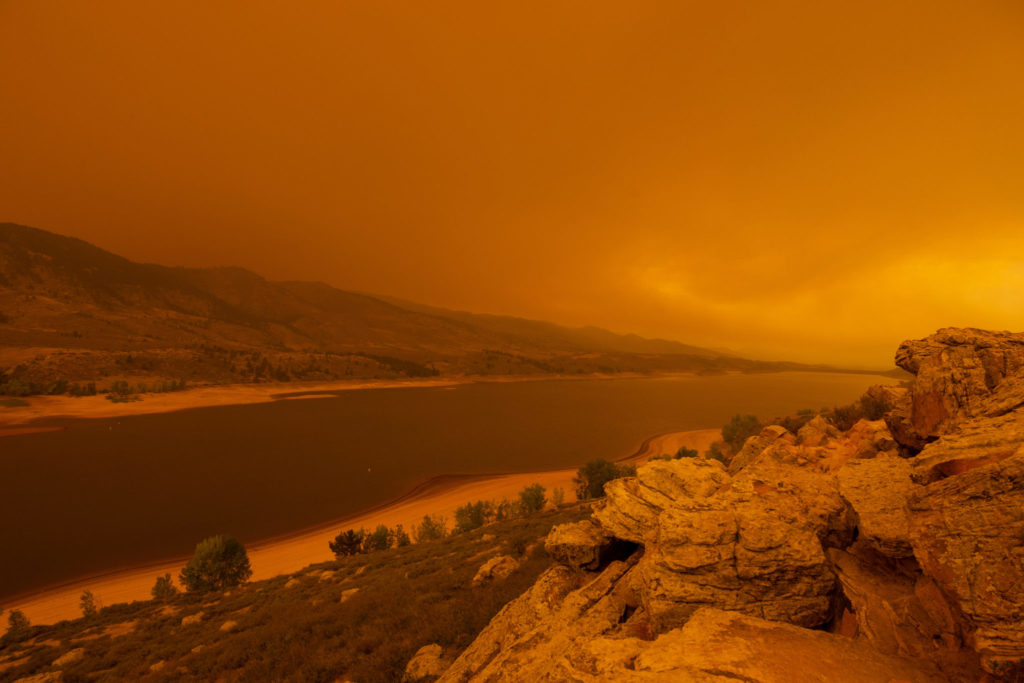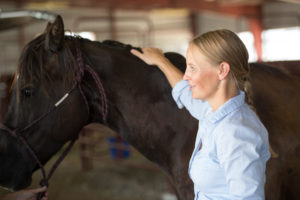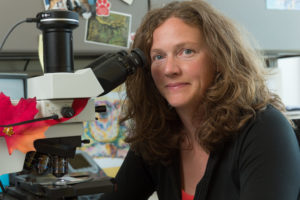

Summer is usually horse trainer Amy Bowers’ busy season, but Colorado’s record-setting wildfires forced Bowers to deliberate hour-by-hour about whether she could safely train horses.
“When ash is falling from the sky, it’s obviously not safe, but small particles can also be really hazardous, and horses can’t go inside and get out of the smoke,” said Bowers, who must decide for herself and her clients when conditions are unsafe. Bowers has many unanswered questions, like how long to rest her horses after a smoke event and the long-term effects of a prolonged wildfire season.
Researchers build BREATHE community
Bowers needs information that doesn’t exist yet, but an interdisciplinary collaboration in the College of Veterinary Medicine and Biomedical Sciences could provide answers. Veterinarians and epidemiologists created a project—Better Racing and Exercise in Air That Horses Enjoy—to study the health impacts of air pollution, including wildfire smoke, on performance horses. For the BREATHE project, veterinarians Colleen Duncan and Katie Seabaugh, epidemiologist Sheryl Magzamen, and veterinary student Josh Moore are surveying horse owners, professionals, and enthusiasts to guide future research and build a community of study participants.
“Many health implications have been linked to poor air quality in people, but in animals we are behind, and especially in horses,” said Seabaugh, a professor equine sports medicine and rehabilitation. “The lung capacity of the horse is impressive and far exceeds human lung capacity and function, so if we think air pollution is influencing us then it’s certainly going to affect the equine athlete.”

Moore used existing data sets for a pilot study on the relationship between race performance and concentrations of pollutants like ozone, nitrogen dioxide, and fine particulate matter. Preliminary results indicate a potential delayed effect. For example, poor air quality mid-week correlated with poor race performance on the weekend. Moore plans to expand the research to look at more races over a longer period of time and compare them to wildfire events.
“Horses and cats are sentinel species, like a canary in a coal mine,” Duncan said. “Like people, they experience chronic lung diseases that require lifelong management. We can’t personally fight fire, but we can protect animals from suffering some of the consequences.”
Changing climate is a One Health challenge
Unfortunately, veterinary medicine knows relatively little about how animals—pets, livestock, and wildlife—are affected by extreme weather events, wildfires, air pollution, and other consequences of climate change. “The feasibility of linking animal health outcomes with our changing environment is quite challenging,” Duncan said.

Surveillance, diagnostics, and management are all hurdles to advancing animal health. Federal and local agencies like the Environmental Protection Agency and the Colorado Department of Public Health protect human populations from adverse environmental impacts, but animals fall outside of their mandate.
“Non-human mammals are subject to the adverse effects of climate change, not only wildfires but also heat stress, changing ocean levels and temperatures, drought, floods, and storms,” said Magzamen, who studies air pollution and public health. “We all share an ecosystem, and changes in the health and welfare of animal populations have a ripple effect that impacts human health and environmental health. Climate change is a One Health problem.”
The One Health principle holds that human, animal, and environmental health are interdependent parts of one system.
Veterinary education is gradually moving towards a One Health approach to 21st century challenges. Duncan and CSU veterinary students recently surveyed DVM students across the country on their perceptions of climate change and veterinary medicine. The results indicated that veterinary students expect to take a leadership role in mitigating and adapting to climate change as clinicians, researchers, and practice owners.
CSU is meeting the rising demand for students’ educational and research opportunities through the BREATHE Project, the One Health Summer Program, and forthcoming continuing education programs from the Translational Medicine Institute.
